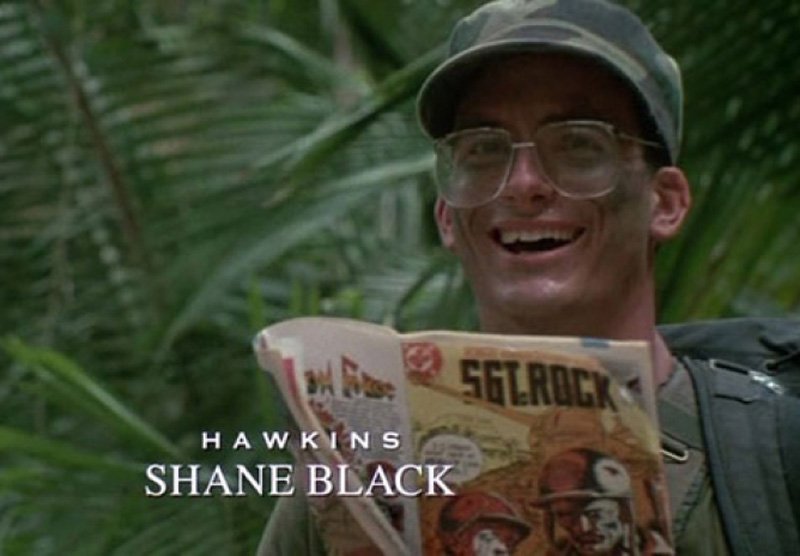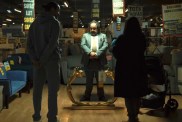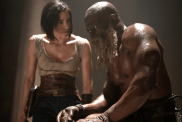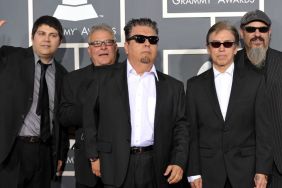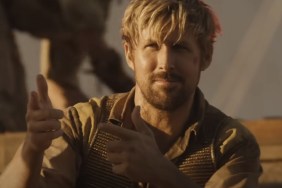We just published our set visit for 20th Century Fox‘s sequel The Predator, and now we’re presenting our full on-set interview with director Shane Black that goes more in-depth on the film. Check it out below!
RELATED: ComingSoon.net Visits the Set of Shane Black’s The Predator
ComingSoon.net: How is working with Jacob Tremblay?
Shane Black: He’s amazing, this kid. He’s playing a kid with a learning disability, he’s playing a kid who’s emotionally traumatized, he’s got six different things to do and, It’s uncanny. He’s a mutant. Part of the fun of this is finding things on set, finding things between the characters and the fun that they’re having and the eagerness and the willingness that they’re bringing to it is helping me a lot. I mean, you’re seeing me in a fairly good mood. Normally, I’d be, eh, not such a good mood. This is a very good sign, actually.
CS: Can you talk about bringing back Fred Dekker and why you wanted to collaborate on him with this?
Black: We’ll, I’ve been working with Fred on a couple of different projects. We found that we sort of complement each other very well. And that goes back ages. They say that no matter how old you get that in your own mind you’re never really capable of picturing more than twenty-five years old as your current age. You always feel yourself to be roughly twenty-five. It’s been thirty years in the business for Fred and myself. You look in the mirror and part of you just says, ‘Jeez, it’d be nice to be a kid again and go back and get that excitement back.’ I mean, there’s a maturity that comes with liking adult themes and adult subject matter, seeing Oscar-winning films, but every once in a while I’d say, ‘Boy, I’d just like to do a Predator movie with Fred.’ Something that recalls for us all those wonderful, exciting days when we were geeks, lining up for Star Trek: Wrath of Khan when it played in Westwood at The National. And so, I think there was a great deal of nostalgia and also a desire to do a kind of old-school thriller in the form of The Predator, because I think the reason there’s a lasting quality that the original movie has that’s due I think, in part to the fact that it was made before it was so easy to just do a bunch of CGI effects and before videogames had taken hold as well. So, there was a more visceral kind of war movie thriller-esque quality to the material because they weren’t saying, ‘What if the camera whooshed around and the character fell off a cliff and we followed him down and then when he hit we ran with him.’ Who’s the cameraman (laughter) Fred and I just thought, let’s make a… obviously we’ve kept up on visual effects and technology and we’re big fans… but let’s try to do an old-school kind of real hearty and heartfelt kind of war movie surrounding this story. And all the elements were like, y’know, spies, romance, mystery-just stuff as much genre into one pack as we can and so you can literally unpack different facets of the movie, which is sort of a stew that represents to us the genre movie that we would’ve loved to see when we were coming up, when we were all young and still felt twenty-five.
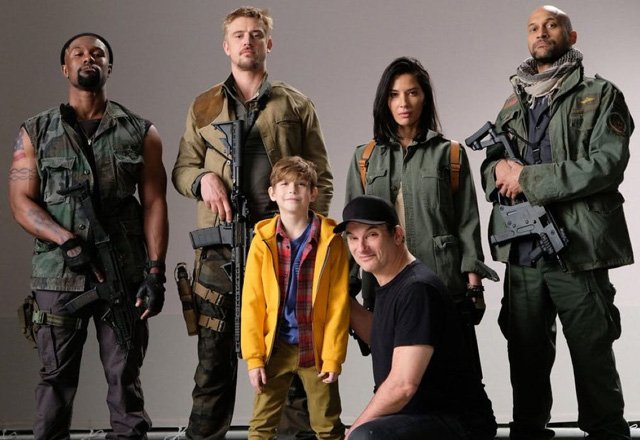
CS: That’s how we’ve heard it described today. A western, a thriller, a comedy, a sci-fi movie. Does that mixture of genre labels please you?
Black: Yeah, but I’ll give you an example: In Kiss Kiss, Bang Bang there’s a scene where Robert Downey shoots a guy in rage and then he realizes he never shot anybody before, he’s never committed an act of violence, so he kind of breaks down a little bit. He’s really upset and he goes, ‘Hey man, I just shot a guy, I never did that before.’ But then, in a scene later they shoot a guy in the head by accident and he’s like ‘Okay’ and this is never gonna cut together because the tones are so disparate. It just seems seamless to me. So, the idea of being able to manage tone, as long as the editing process is specific enough it’s a balancing act, but that’s what makes it so much more difficult than doing a film that relies solely on the continuation of a single unwavering tone. It’s ultimately gonna be a thriller. It’s not gonna be a comedy. It’s an R-rated movie and it’s supposed to be a kind of harrowing experience. I think it goes to what Fred and I are very familiar with, which is, if you told me to write a comedy I’d be helpless, but if you say write a thriller and put some jokes in it, then fine. Then, I don’t have to worry. The curse comes off, because the narrative and the thrills-you know what would be great here is if the guy threw him the gun and he missed and the gun just broke a window or, y’know, whatever. So, it’s that sort of combination and tone shuffling that becomes at once the juggling act and also the challenge, but the joy to of what we’re trying to do.
CS: You and Fred did a script in the 80’s called “Shadow Company,” which seems to have similar themes to “The Predator” story. Did you draw from that script?
Black: Partly yes and partly no. I don’t think it’s giving a lot away to say that to the extent that this happens in a small town, that it’s a small part of the movie. They said well, ‘it’s set in the suburbs’. Hmm, no (laughter) I mean there’s scenes that happen that are set in suburban streets, but the idea that it’s some Mahjong club fighting an alien isn’t how it’s gonna happen.
CS: We’ve heard the word reinvention a lot for “The Predator.” Can you talk about your approach to making Predator fresh and new while honoring the legacy of the first two films?
Black: Well, I think that there’s a basic premise that has to be honored every time you make a Predator film and that’s in some way, whatever the plot turns out to be, it has to, at some level, represent a hunt. But, beyond that I think there’s infinite variability. It’s like, monkey bars, you ever play on the jungle gym when you were a kid? It looks like they’re rigid and hard and it’d be hard to play on these things because they’re so rough, but if you go inside them there’s actually a lot of room to move around, you just know that the borders are there every once in a while. So, we just tried to take the existing mythology and take it a step further. Ask some questions about why? Why Predators do what they do? What would be the next step for them? How do we up the stakes so that there’s not just a single Predator hunting a group of soldiers? Who are the soldiers? How are they different? What’s the heroic quotient and how do you make it not just guys with tough talk and big arms? I mean, I always favor real characters with real actors in these movies. I’m happy to have someone like Jesse Ventura, he’s actually a fine actor as far as that goes. But, the actors we tended to get for this are a cut above I think, the average tough guy. There’s an element of intrigue and I think espionage/mystery, whatever. The government is involved in this and it takes it to the level of what happens when The Predator strikes, these incursions are not just a every-once-in-a-while phenomenon known to a few, but have come to the attention of an establishment that is actually set on preparing for and marshaling forces against these incoming Predator strikes. And, so it’s that sort of-what the next step is when they get noticed is kind of what we start as our jumping off point for what’s different. And also, what happens when the Predators get a little more ambitious. Maybe it’s not just a weekend anymore. So, we’ve had some fun with that.
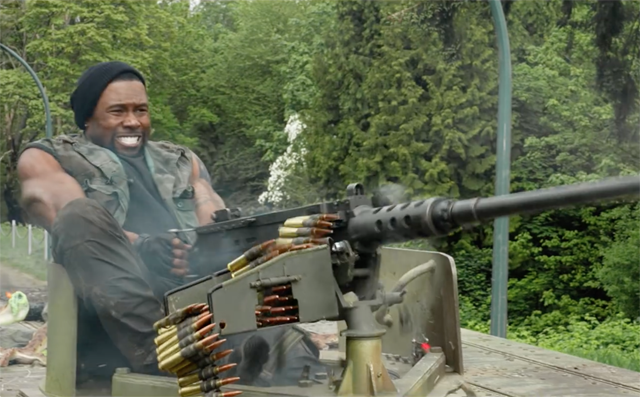
Q: I’m curious about the process of giving the actors more freedom to improvise?
Black: Well, because it’s a Predator movie so much of it was plot and action. We had a lot of character beats, but as we were writing it, I would say to Fred, “You know what? This thing is gonna be a hundred and fifty pages let’s just find these characters. We can’t define seven characters perfectly. Let’s cast them.” And so, we’ve been writing through production. On Iron Man 3, Downey would be like, “Time!” and I’d be like, “We’re shooting!” and he’d be, “No, shut the cameras” and we’d go back to the trailer and we’d all write, because he wanted new lines. I mean, maybe it’s a little bit of that. Maybe I took a lesson from him. We’ve had a great deal of fun incorporating input from talented people who haven’t been looking at the same pages for two years. Y’know, Ryan Gosling’s input on The Nice Guys and Robert Downey’s input on anything, I’m happy A) That they elevate the material and B) To take credit for whatever lines they happen to generate. (Laughs)
CS: The first movie was a pretty meat and potatoes action movie. What did you see in “The Predator” that made you want to take on PTSD and learning disabilities and themes about the government?
Black: I guess it was a reaction against perfection and the Predator going up against a perfect specimen all the time. And that being solely based on physical appearance and muscles and I thought, well, maybe misfits; maybe there’s a version in which misfits play more of a role and maybe there’s even a sense that The Predator himself is even an outcast. So, we were trying to find thematic elements that work for us.
CS: We’ve heard how you want this to be an event film that’s different from other Predator films. What do you think you can bring to this landscape that other alien movies and other predator sequels have missed?
Black: It’s the ambitiousness of not wanting to stay small and just wanting to pack as many different possibilities, themes and character. I think in the same way that Aliens succeeded so well that you had the Bill Paxton’s and Jeanette Goldstein’s and Lance Henrikson that were popular. You had great characters. So, I think the death of some of the Predator movies has been a dearth of really intriguing characters that have development. But, beyond that, I think this one is bigger and that it costs more…I know it costs more (laughter). It’s a hammer over my head. But, that’s where the thriller part comes in. It’s just-change the scale, up the stakes and make it as thrilling as you can. I mean, there’s just so many set pieces and sequence and the influences that we were going by are not sort of the spectacle. I remember Michael Bay, when I saw Transformers for the first time, and I thought that’s pretty good, except there’s a scene where a robot goes through a skyscraper, breaks through one window, slides down an entire length of the office building and breaks through the other side and if it had just been that, then you would’ve gone, “Wow! I can’t believe I saw that in a movie.” But, you’re surrounded by fifty identical stunts, so you just sit there and go, “Yup, there goes another one.” So, our quest to be a cut above is to make it so you keep changing it up. So, that it feels more like a thriller and less like just action. Because, action to me is not sustainable over two hours. I mean, you can like it. You can like the Transporter movies. They’re fun. But, at the end you don’t feel like you’ve had an experience with a guy that you want to sit down with, you feel like you’ve watched an action character flex his muscles. So, hopefully we’ve given you a bigger canvas, more action and better characters. That’s a lot.
CS: Your movies seem more preoccupied with humanism, bringing a certain subtext to it. Tom Jane said he thinks war is terrible and he doesn’t think this movie is glorifying it. Can you talk about that?
Black: Yeah, that was important to me, because when I grew up war movies were not about the thrill of war in the ‘70’s, they were about the horror of war, but they still celebrated the camaraderie of the men. I guess that’s where we are now. But, I love also dipping a toe in that right-wing pond every once in a while. I’m an avowed liberal, but, every once in a while you get your Matt Helm on and say, “what would happen if you just executed assignments and didn’t ask about moral questions?” Just get it done, y’know? I like the mentality of guys available who do that, but then who have been damaged by that. And so, we get a little taste, I think, of characters who aren’t as comfortable, but who are also killers. Ultimately, no matter how they may feel about it, they have a certain set of skills that can’t be turned off. The faucet can be reduced, but the drip will always be there and the tendency towards violence, the tendency toward the facile skill that elevated and separated them from other mortal men. So even though-y’know, Tom Jane’s character for instance has his own disability. Y’know, he picks up a gun and it quells the disability.
CS: What you said early is a little bit radical in a large movie environment now, where anything over 100 million, let alone 200 million, almost has to have a big action beat every 8-10 minutes. Is that something you have to buck against?
Black: Joel Silver taught me about the Wham-O-Meter, which is when you have a big action sequence. The question is what is a “whamo”? What is the action sequence? Does it have to be spectacle or can it be somewhat more clever than that? I thought that Logan-in the big action sequence when he escapes from that oil refinery or whatever-where he’s pulling the fence along. I thought that was very clever and cool. But, it wasn’t just an action movie. I think Logan’s actually not a bad model in terms of the time spent offering you satisfying action, but also visceral action and then also spending time on a surprising character piece. If we can do half their business I’d be thrilled (laughs) I mean, we have a big budget, but we don’t have a “big” budget. Doing Iron Man 3, I came in and said, “Let’s just keep our appetite up.” That was 200 million. Keep our appetite up. Just keep your mouth open. Assume a meal will enter it. Don’t shoot for low, shoot for high. And we’re making Iron Man 3, it turns out, and we found ways to do it on half the budget. But, the ambition level is the same as if we were allotted the same kinds of resources we had on Iron Man 3.
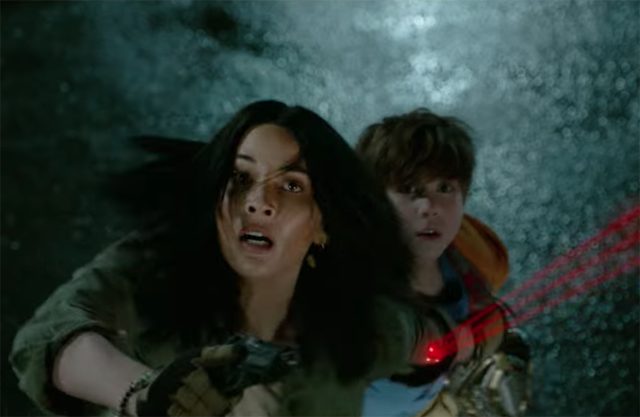
CS: On this film, what’s your attitude about in-camera vs. digital?
Black: Well, I’m very open to digital techniques that look real. But, I also know the eye can’t be easily fooled. And the eye knows when it’s being fooled, so if it’s gonna be a digital shot, it just has to feel real, you have to know there was a camera. For instance, on Indiana Jones and the Temple of Doom there’s a shot where Harrison Ford runs out over a chasm and it’s looking straight down and straight up a thousand feet and he’s just perched, like almost falling into the chasm and you see it from a distance and its special effects shot, obviously. But, it does this (moves hands) and they didn’t have to do that, but they knew you’d assume it was a helicopter shot if the special effect moved. So, they simulate the reality and they make it feel real, even if it’s an effect. Similarly, you combine things, like Jurassic Park with the real sculpted dinosaur head comes in the car, but then the CG dinosaur walks away through the windshield. So, using that technique of half is digital, half is sculpted. Also, part of our goal. We use a lot of sculpture. We’ve got ADI, the original Predator designers, I think they skipped the last one. But, (Tom) Woodruff and (Alec) Gillis are doing our Predator for us.
CS: A big dynamic of your previous films is the two-hander buddy dynamic that doesn’t seem to be present in this film. Was that an active decision to move away from that?
Black: Well, yeah, cause if you’re doing The Dirty Dozen then you sort of have to adapt to that. So, instead of doing the buddy western, which I’m essentially very familiar, we said, okay, now you’ve got The Magnificent Six, so what are you gonna do with that? And, that’s been fun. And, Olivia Munn, adding her as a scientist and bringing in the scientific element, the government element and adding the kid-in other words, it’s-if you bought a comic book that just said, “Genre Sh*t” and started reading it, it could well be this movie. (laughs)
CS: Also, noticed you aren’t doing Christmas?
Black: No, no, no. As soon as people noticed it, I said f*ck it. (laughs)
CS: I’m curious what it’s like coming from a minor role in the ‘87 Predator and now you’re the head of a new film. What is that journey like?
Black: Well, there’s a certain satisfaction in it. It’s hard in the midst of production; you don’t wake up every day and say, “Y’know, what a great journey I’m at the culmination of. I’m tired, the money’s not coming…” It’s really just a day by day thing. I suppose, once it’s over and I have time to reflect back it’ll feel satisfying that we’ve continued the tradition, assuming we pull it off and people accept what we’ve done. I still get the beheadings hate mail from Iron Man 3 because we changed something and I understand that. I think that we’re not changing what the sense of The Predator is, I think we’re expanding on what’s there and I think, hopefully, we’re making a thriller that will play on the same-I mean, in my head, the templates I go to are never small. Jaws, to me, is a small movie, but it’s not a small movie. It’s an epic sea adventure. And, within it, he (Spielberg) didn’t stop short and say, ‘Well, let’s just take the boat out in the harbor, tool it around a couple times and get what we get.’ No, he said, ‘We’re gonna make the ultimate sea adventure. You’re gonna feel every second of this and you’re gonna feel the tension of the rope and the precariousness of the ship and the flooding of the water and the mythic timelessness of this nemesis under the water that prowls at night and waits for the enemy. That’s what we’re gonna get.’ So, we took the element of myth and said, let’s put myth in this thing and not just make an event that happens like, ‘oh, look a Predator, honey.’ It’s about the myth of alien incursion. It’s about watching the skies and basically just, guys who doubt themselves, who have skills, but don’t believe they’re truly capable of facing what they’ve been pitted against and it’s the thrill of the hunt. Waking them up again to the possibilities of who they are.
CS: In the back of your mind did you always have an idea for more Predator films?
Black: No, I just thought that it was a great, iconic alien. And, what separated it from other alien invasion movies wasn’t just a space plot, it was an actual space creature with a mythos and a sense of honor, in some respect. A mission. And, a sense of humor, oddly. The idea of the game it plays. It’s rare that the Predator shows humor, but there are moments where you see it almost look at someone like, “really?”
The Predator will open in theaters on September 14.
The Predator Trailer #1 Screenshots
-
The Predator Trailer #1 Screenshots

-
The Predator Trailer #1 Screenshots

-
The Predator Trailer #1 Screenshots

-
The Predator Trailer #1 Screenshots

-
The Predator Trailer #1 Screenshots

-
The Predator Trailer #1 Screenshots

-
The Predator Trailer #1 Screenshots

-
The Predator Trailer #1 Screenshots

-
The Predator Trailer #1 Screenshots

-
The Predator Trailer #1 Screenshots

-
The Predator Trailer #1 Screenshots

-
The Predator Trailer #1 Screenshots

-
The Predator Trailer #1 Screenshots

-
The Predator Trailer #1 Screenshots

-
The Predator Trailer #1 Screenshots

-
The Predator Trailer #1 Screenshots

-
The Predator Trailer #1 Screenshots

-
The Predator Trailer #1 Screenshots

-
The Predator Trailer #1 Screenshots

-
The Predator Trailer #1 Screenshots

-
The Predator Trailer #1 Screenshots

-
The Predator Trailer #1 Screenshots

-
The Predator Trailer #1 Screenshots

-
The Predator Trailer #1 Screenshots

-
The Predator Trailer #1 Screenshots

-
The Predator Trailer #1 Screenshots

-
The Predator Trailer #1 Screenshots

-
The Predator Trailer #1 Screenshots

-
The Predator Trailer #1 Screenshots

-
The Predator Trailer #1 Screenshots

-
The Predator Trailer #1 Screenshots

-
The Predator Trailer #1 Screenshots

-
The Predator Trailer #1 Screenshots

-
The Predator Trailer #1 Screenshots

-
The Predator Trailer #1 Screenshots

-
The Predator Trailer #1 Screenshots

-
The Predator Trailer #1 Screenshots

-
The Predator Trailer #1 Screenshots

-
The Predator Trailer #1 Screenshots

-
The Predator Trailer #1 Screenshots

-
The Predator Trailer #1 Screenshots

-
The Predator Trailer #1 Screenshots

-
The Predator Trailer #1 Screenshots

-
The Predator Trailer #1 Screenshots

-
The Predator Trailer #1 Screenshots

-
The Predator Trailer #1 Screenshots

-
The Predator Trailer #1 Screenshots

-
The Predator Trailer #1 Screenshots

-
The Predator Trailer #1 Screenshots

-
The Predator Trailer #1 Screenshots

-
The Predator Trailer #1 Screenshots

-
The Predator Trailer #1 Screenshots

-
The Predator Trailer #1 Screenshots

-
The Predator Trailer #1 Screenshots

-
The Predator Trailer #1 Screenshots

-
The Predator Trailer #1 Screenshots

-
The Predator Trailer #1 Screenshots

-
The Predator Trailer #1 Screenshots

-
The Predator Trailer #1 Screenshots

-
The Predator Trailer #1 Screenshots

-
The Predator Trailer #1 Screenshots

-
The Predator Trailer #1 Screenshots

